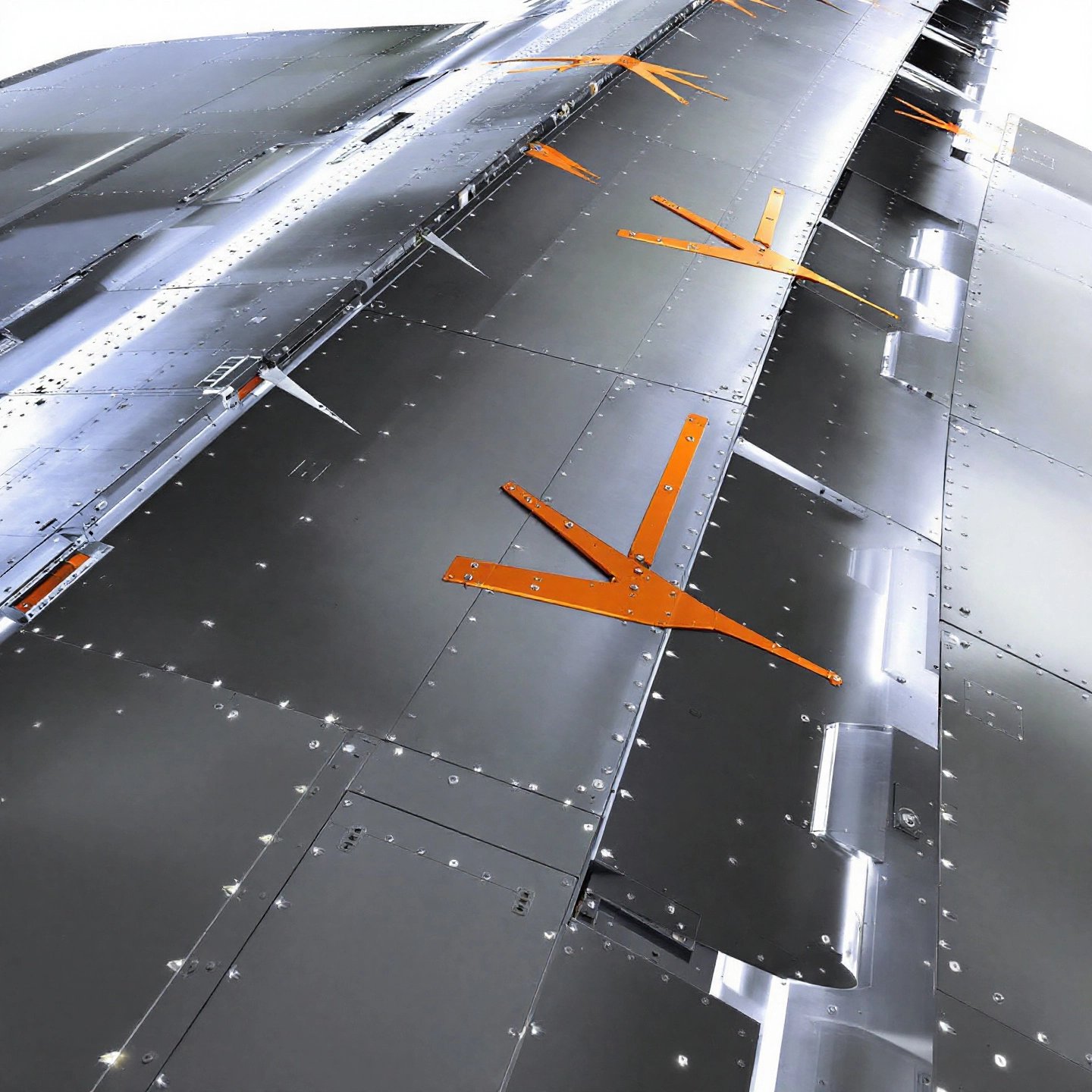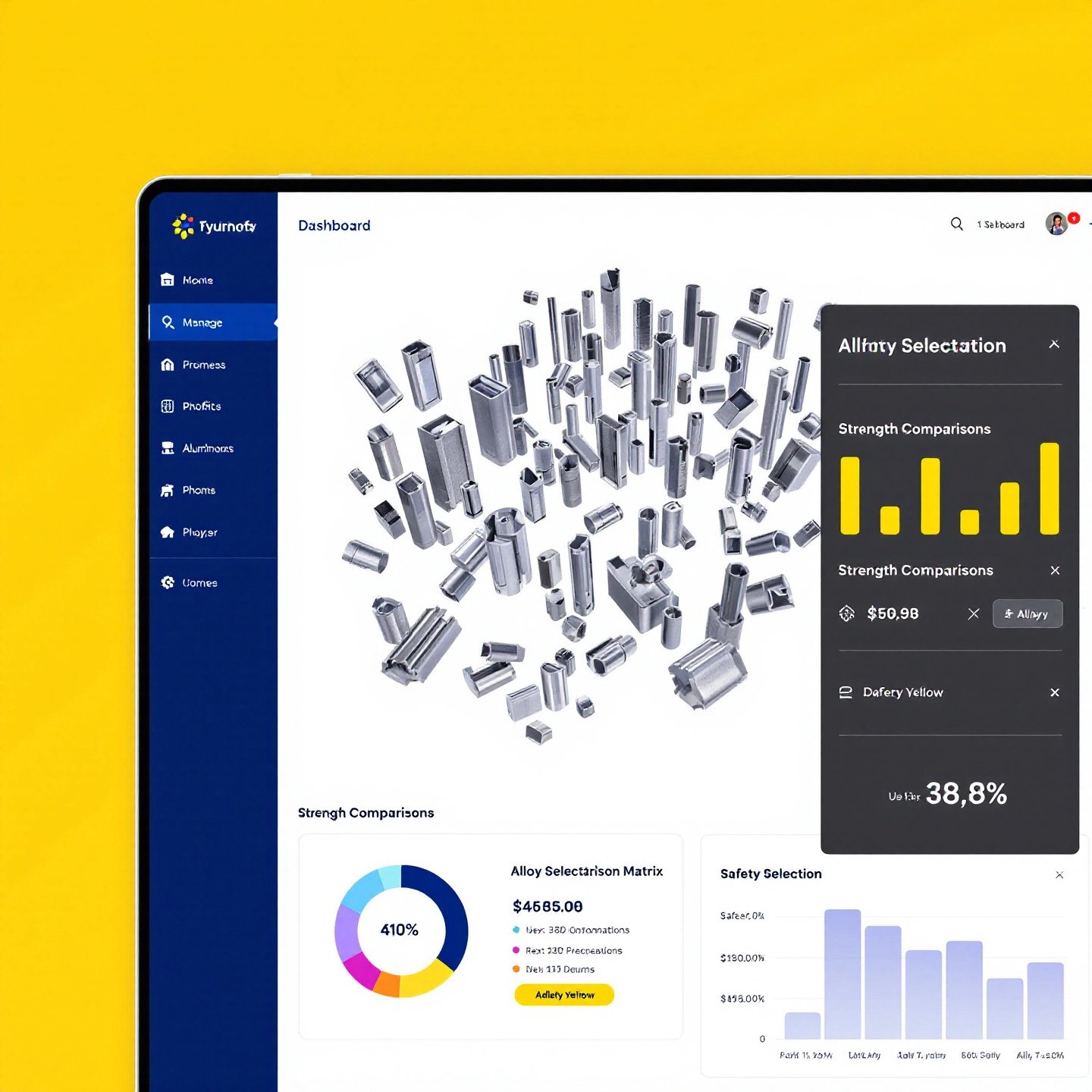
What determines whether an aluminum alloy can support the weight of a skyscraper or withstand the forces of a jet engine? The answer lies in its yield strength – the maximum stress a material can endure before permanent deformation occurs. This fundamental mechanical property dictates aluminum's load-bearing capacity, making it a cornerstone of material selection in critical industries.
Aluminum's yield strength values span an impressive range from 30 MPa for pure aluminum to over 700 MPa for specialized alloys. Consider these applications:
Three primary factors create this remarkable versatility:
Engineers leverage these variables to tailor aluminum alloy strength precisely to application demands. While pure aluminum serves in non-structural roles like packaging foil, high-strength variants enable revolutionary designs – from fuel-efficient vehicles to space station components. This adaptability explains why aluminum accounts for nearly 80% of modern aircraft structures by weight.
Understanding al yield strength isn't just about numbers – it's about unlocking aluminum's full potential through intelligent material engineering. As we explore specific alloys in subsequent sections, you'll discover how this property shapes our built environment and technological progress.
What exactly determines whether an aluminum component bends permanently or springs back under pressure? The answer lies in two critical measurements: yield strength and tensile strength. While often confused, these properties measure different behaviors:
Imagine bending a soda can tab: The initial resistance you feel relates to yield strength, while the force needed to snap it represents tensile strength. For structural applications, engineers prioritize yield strength – it determines the functional limit before irreversible damage occurs.
Three primary levers control aluminum's yield strength:
These factors interact synergistically – a 6061 alloy gains 276 MPa yield strength in T6 condition versus just 55 MPa when annealed. As we examine specific aluminum series next, you'll see how metallurgists combine these elements to create materials optimized for everything from beverage cans to spacecraft.
Ever wondered how aluminum maintains structural integrity without heat treatment? The secret lies in work-hardenable alloys from the 1xxx to 5xxx series. These alloys gain strength through cold working rather than thermal processing, making them ideal for applications requiring both formability and corrosion resistance.
| Alloy | Primary Elements | Temper | Yield Strength (MPa) | Key Applications |
|---|---|---|---|---|
| 1100 | 99% Al | O (Annealed) | 35 | Chemical equipment, decorative trim |
| 3003 | Al + 1.2% Mn | H14 | 145 | Fuel tanks, cooking utensils |
| 5052-H32 | Al + 2.5% Mg | H32 | 195 | Marine hardware, vehicle panels |
Data sourced from Kloeckner Metals
When selecting between these alloys, consider:
These non-heat-treatable alloys prove that aluminum doesn't always need thermal processing to achieve functional strength. Their combination of work-hardening capability and natural corrosion resistance makes them indispensable in industries from marine engineering to food processing.

Why do architects and engineers consistently choose 6xxx series aluminum for projects demanding both strength and manufacturability? The answer lies in its magnesium-silicon (Mg-Si) alloy composition, which delivers an optimal balance of mechanical properties and extrudability. As the most versatile aluminum family, these heat-treatable alloys dominate structural applications from building facades to electric vehicle components.
| Property | 6061-T6 | 6063-T6 |
|---|---|---|
| Yield Strength | 276 MPa | 215 MPa |
| Elongation | 12% | 14% |
| Thermal Conductivity | 167 W/m·K | 201 W/m·K |
| Typical Uses | Structural frames, truck chassis | Window systems, LED heat sinks |
Data sourced from Industrial Metal Supply
Key differentiators emerge from their chemical ratios:
Leading Chinese extruder Shengxin Aluminum demonstrates the 6xxx series' versatility through two flagship applications:
Their 5500-ton extrusion press – Anhui Province's largest – produces 6xxx profiles with ±0.1mm dimensional accuracy, critical for aerospace and transportation applications. This capacity allows simultaneous optimization of al 6063 yield strength and surface quality in high-volume production runs.
When specifying 6xxx alloys, consider this rule: 6061 for strength-critical joints, 6063 for corrosion-resistant visible elements. Next, we'll explore how thermal treatments dramatically enhance 6061's capabilities across tempers.
Why would engineers use the same aluminum alloy at different strength levels? The answer lies in 6061's thermal treatment spectrum. Through controlled heating and cooling cycles, this versatile alloy can be tuned like a precision instrument to match specific load requirements.
The yield strength of 6061 aluminum directly dictates its industrial roles:
For extreme performance needs, 6061 al fully forged components achieve yield strengths reaching 310 MPa. This 12% increase over standard T6 comes from:
Aerospace manufacturers like Chalco Aluminum use this process for critical components including landing gear shafts and engine mounting hubs.
While 6061's thermal treatments offer remarkable flexibility, other alloys like 6082 push strength even further. Next, we'll examine how different magnesium-silicon ratios create specialized performance profiles.
When should engineers prioritize raw strength over formability in aluminum alloys? The 6082-T6 vs 6063-T6 comparison perfectly illustrates this critical design decision. While both belong to the magnesium-silicon alloy family, their distinct compositions create markedly different performance profiles.
| Property | 6082-T6 | 6063-T6 |
|---|---|---|
| Yield Strength | 340 MPa | 215 MPa |
| Elongation at Break | 10% | 12-18% |
| Typical Uses | Structural rail components | Architectural extrusions |
Data references: MakeItFrom.com, Aluminum Extruders Council
Leading Chinese extruder Shengxin Aluminum demonstrates the complementary use of both alloys:
With 43 extrusion lines ranging from 300 to 5500 tons, Shengxin's dual-capacity production allows simultaneous manufacturing of both alloys - a critical advantage when projects require both structural 6082 components and decorative 6063 elements.
Choosing between these alloys ultimately depends on three factors:
This strategic alloy pairing demonstrates how intelligent material selection balances aluminum yield strength with manufacturing practicality. Next, we'll explore how aerospace engineers push aluminum's strength limits even further with specialized alloys.

What enables an aluminum alloy to endure 30,000 flight cycles while maintaining structural integrity? The answer lies in 2024-T3 aluminum, the aerospace industry's workhorse alloy with a remarkable yield strength of 325 MPa and exceptional fatigue resistance. This copper-alloyed material strikes the perfect balance between durability and machinability for critical aviation components.
2024 aluminum derives its power from a precise 4.4% copper composition. During heat treatment:
| Property | 2024-T3 | 7075-T6 |
|---|---|---|
| Yield Strength | 325 MPa | 505 MPa |
| Tensile Strength | 470 MPa | 572 MPa |
| Fatigue Limit | 138 MPa | 159 MPa |
| Primary Alloy | Copper (4.4%) | Zinc (5.6%) |
| Typical Use | Wing structures | Landing gear |
Data sources: AAA Air Support, Wikipedia
While 7075-T6 (al 7075 yield strength = 505 MPa) offers higher ultimate strength, 2024's superior fatigue resistance makes it preferable for cyclic loading applications. The zinc-rich 7075 finds use in extreme-stress components like:
Engineers often pair these alloys - using 2024-T3 for fuselage panels requiring frequent flexing and 7075-T6 for components needing ultimate strength. This strategic combination demonstrates how understanding al yield strength variations enables optimal material selection across complex systems.

How do engineers balance competing priorities when choosing aluminum alloys? The answer lies in a systematic evaluation of three critical factors: yield strength, corrosion resistance, and cost-effectiveness. Let’s break down this decision-making process with practical tools and real-world insights.
| Alloy/Temper | Yield Strength (MPa) | Corrosion Resistance | Cost Index | Best Applications |
|---|---|---|---|---|
| 5052-H32 | 195 | Excellent | 1.2 | Marine components |
| 6061-T6 | 276 | Good | 1.5 | Structural frameworks |
| 6082-T6 | 340 | Moderate | 1.8 | Rail transit systems |
| 7075-T6 | 505 | Poor | 3.0 | Aerospace components |
Cost index: 1.0 = pure aluminum baseline | Data adapted from MCDM material selection study
When projects demand custom solutions, manufacturers like Shengxin Aluminum provide critical technical support through:
Their work on Beijing Line 19 subway components demonstrates this approach – using 6082-T6 for door beams (340 MPa yield strength) paired with 6063-T6 for corrosion-resistant exterior trim. This strategic combination reduced vehicle weight by 12% while meeting strict safety standards.
Pro Tip: Always request mill test reports verifying actual yield strength values, as batch variations can impact ±5% of published figures.
Ready to optimize your aluminum selection? Partner with certified suppliers who combine material expertise with advanced manufacturing capabilities to turn yield strength specifications into real-world performance.
When selecting aluminum alloys, does your project demand the structural integrity of 6082-T6 (340 MPa) or the corrosion resistance of 5052-H32 (195 MPa)? This final analysis of al yield strength demonstrates how this single property shapes aluminum's role across industries – from EV battery trays to subway door beams.
Shengxin's work on Beijing Line 19 subway components exemplifies yield-strength optimization:
| Component | Alloy | Yield Strength |
|---|---|---|
| Door Beams | 6082-T6 | 340 MPa |
| Exterior Trim | 6063-T6 | 215 MPa |
As aluminum continues revolutionizing industries from renewable energy to aerospace, understanding yield strength remains critical. Certified suppliers bridge technical knowledge and manufacturing execution – Shengxin Aluminum's 18-year track record in rail transit and architectural systems proves this synergy creates measurable results.
Ready to optimize your alloy selection? Consult Shengxin's engineers for custom profiles matching your exact yield strength requirements and application environment.
6061 aluminum's yield strength varies by temper: 55 MPa (O), 145 MPa (T4), and 276 MPa (T6). The T6 condition is preferred for structural applications like aircraft components.
While steel generally has higher yield strength (250+ MPa), advanced aluminum alloys like 7075-T6 achieve 505 MPa. Aluminum offers better strength-to-weight ratios for aerospace and transportation applications.
Heat treatments like T6 tempering can increase yield strength by 400% through precipitation hardening. For 6061 alloy, this process boosts strength from 55 MPa (O) to 276 MPa (T6).
Key factors include alloy composition (magnesium/silicon content), manufacturing processes (extrusion/forging), and thermal treatments. Copper in 2024-T3 aluminum enhances aerospace-grade strength to 325 MPa.
7075-T6 aluminum offers exceptional yield strength of 505 MPa, used in aircraft landing gear. However, 6082-T6 (340 MPa) provides better corrosion resistance for rail transit systems.
 Onlineservice
Onlineservice 0086 136 3563 2360
0086 136 3563 2360 sales@sxalu.com
sales@sxalu.com +86 136 3563 2360
+86 136 3563 2360